Once you have modeled your business process on the diagram pane, you have to add the necessary execution parts to this process to bring it to life. The execution pane is the place where you make your model executable:

You need to perform two steps to implement executional parts to your model:
-
Provide all necessary data types and operations for the implementation of your process. These types and operations reside in the Service panel of the BPMN editor.
-
You can use the Base Types that are provided with the Designer.
-
You can create other necessary types yourself in the Implementation section.
Refer to Modeling Data Mapping for further information. -
You can import a library that provides additional types and operations.
Refer to Administrating Libraries for further information.
-
-
In the second step, select data types and operations from the Service panel, and add them to your process at the right places.
-
How this is done will be explained in this chapter.
-
Customizing the Execution Pane
You have several options to adjust the diagram pane. When you open the pane for the first time, the default view is displayed:
-
The Diagram Pane is displayed in the centre at the top
(refer to chapter Modeling BPMN for further information) -
The Execution Pane is displayed below the diagram pane
(refer to chapter Modeling Execution for further information) -
Four Designer Panels are shown in the left and right sidebars
-
The Service Panel
-
The Controls Panel
-
The Attributes Panel
-
The Validation Panel
-
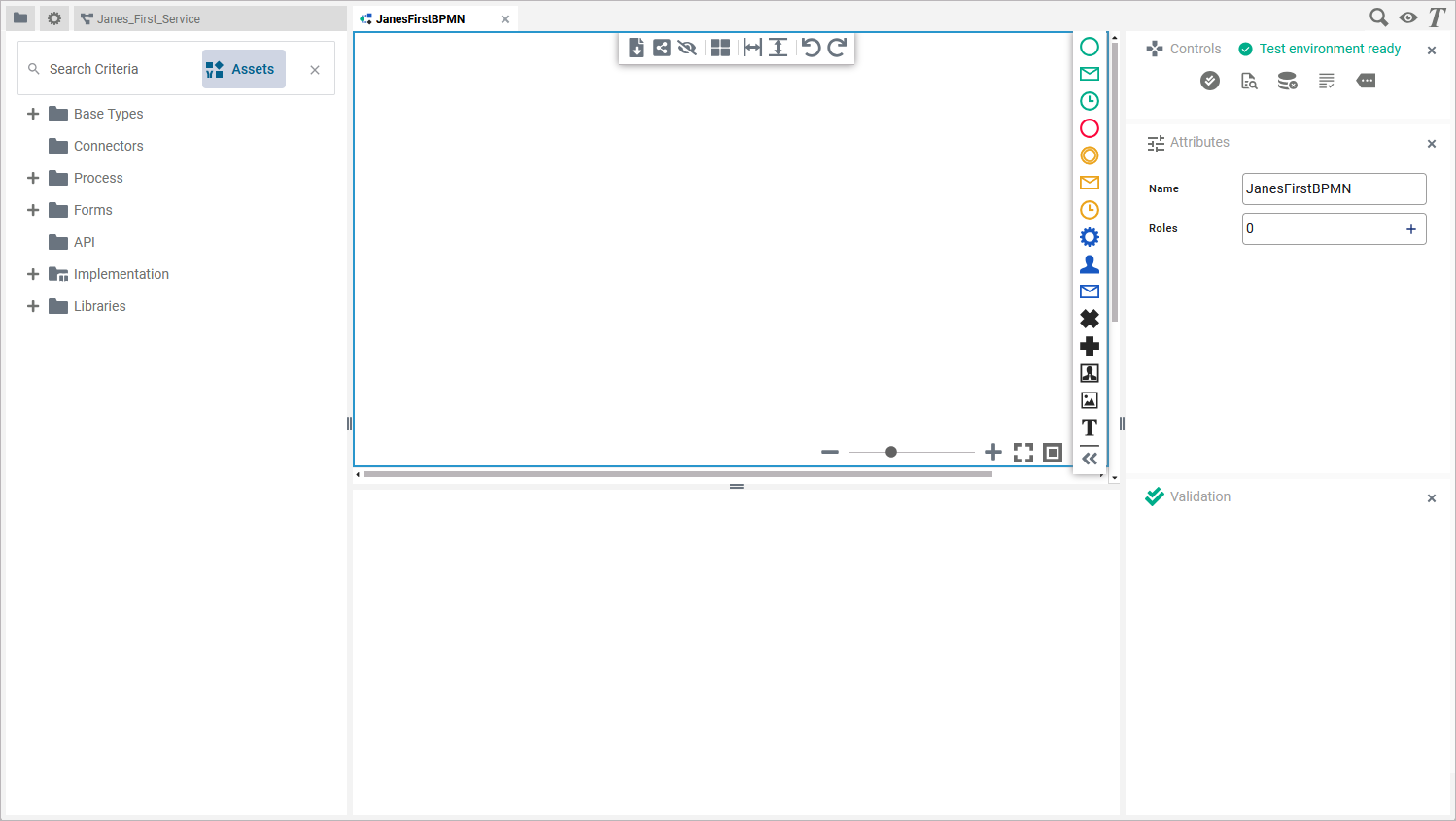
Refer to Customizing Editors and Panels for detailed information about panel management in general.
Modeling on the Execution Pane
While modeling, some general functionalities help you to browse through your model, and to adjust your working location within the model. Refer to Customizing Editors and Panels for more details.
Adding an Execution Model
For some BPMN elements, the execution model is initially created during element creation. For others, you have to add the execution model manually (see Modeling Execution > Execution Pane Contents for detailed information). Click Plus the center of the empty execution editor to create a new execution model:
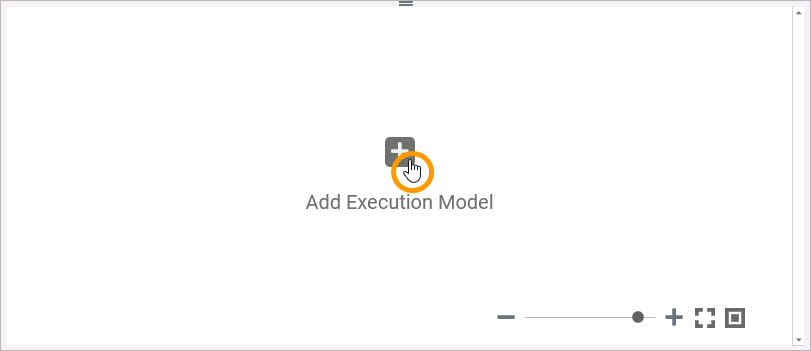
Depending on the BPMN element, the available execution model or models are shown:
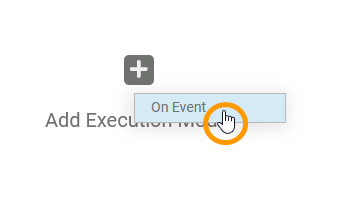
Select the one you want to add. Possible options are:
-
On Event: The model is executed when the event occurs.
-
On Exit: The model is executed after completion of the task/event.
-
Decision: The model is executed when the process reached the gateway.
-
Get Data: The model is executed when BPMN is waiting in a user task and returns the default values for the form.
An empty execution model is added in the execution pane and a tab with the model name is displayed in the lower left corner:

If a Plus is available in the execution tab bar, you can add more than one execution model to the element:

If multiple models have been added to an element, multiple tabs are displayed in the execution pane. Click on a tab to switch between the model content:
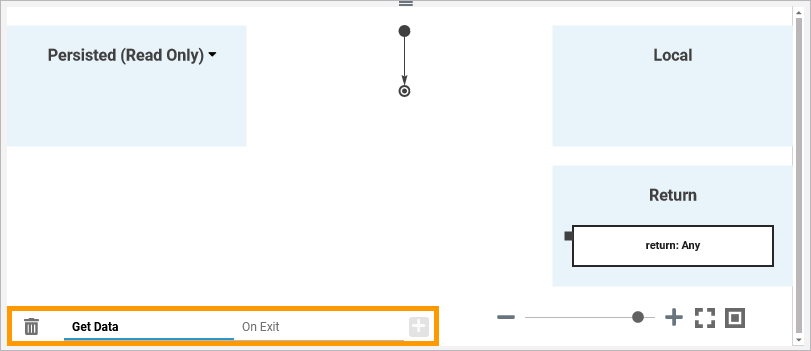
In the default Look & Feel:
-
The tab of the current model is displayed in bold with a blue border at the bottom.
-
The tab of inactive tabs is displayed in a lighter font color.
Click Delete to remove the current execution model:

You will need to confirm the deletion:
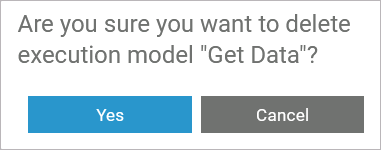
Adding Content to an Execution Model
Adding content to an execution model is simple: Just drag & drop the elements you want to use from the service panel to the execution pane:

Two different kinds of elements can be added to the pane:
-
Variables
-
Operation Calls
You can add variables when dragging out a class, an interface or a parameter from the service panel:
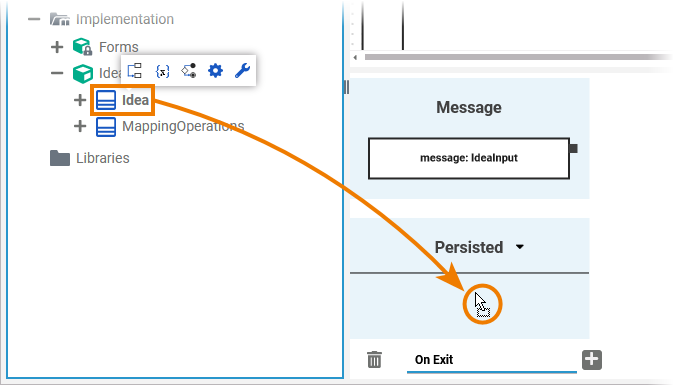
For detailed information refer to Adding Variables and Persisting Data.
You can add an operation call when dragging out an operation from the service panel:
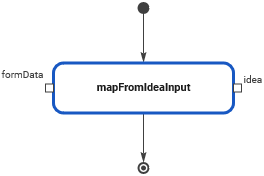
For detailed information refer to Adding Operation Calls.
Some execution models have already some parameters added. A section Message containing the incoming message parameter is displayed for all BPMN elements that provide a message:

A section Return contains the return parameter if the related BPMN element provides a return value.

Refer to Modeling Execution for an overview on the sections in the BPMN editor.
The Context Menus of the Execution Editor
Two different context menus support the user on the execution pane.
|
Elements Context Menu |
Icon |
Description |
|---|---|---|
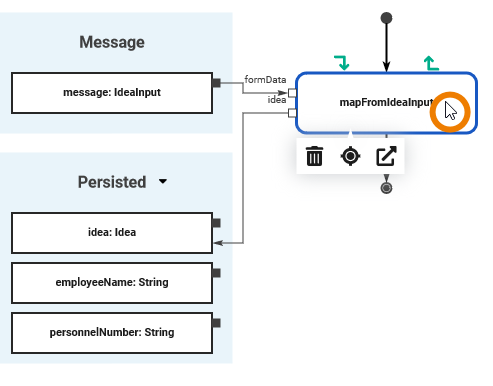
If you right click on an element, the context menu opens. You can use the elements context menu on all elements on the execution pane: 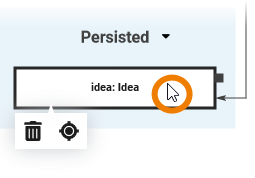
|
|
Delete the element. |
|
|
Use this option to highlight the current element in the Service panel. |
|
|
|
Use this option to open the implementation of the element in a new tab and switch to this tab. This action is only available for operations if they have an implementation. |
|
|
Execution Pane Context Menu |
Icon |
Description |
|
A right click on the execution pane itself opens another context menu: 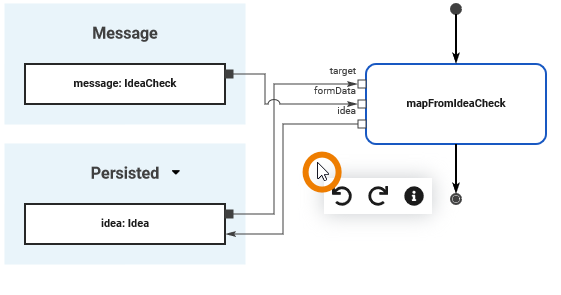
|
|
Undo the last action. |
|
|
Redo the last action. |
|
|
|
Use this option to show or hide the parameter names of operations on the execution pane. |
Shortcuts
You can also use the following shortcuts on the execution pane. The operations are applied to the currently selected element.
|
Shortcuts |
Description |
|---|---|
|
Ctrl + 1, 2, 3 ... 9 |
Opens the tab corresponding to the chosen number. The first nine opened models are offered for activation. Press a number to activate the corresponding model and bring it to the foreground. |
|
Ctrl + D |
Closes the active model window. |
|
Ctrl + Mouse Wheel |
Reduces (scrolling down) or enlarges (scrolling up) the zoom factor of the model. |
|
Ctrl + Shift + D |
Closes all tabs and switches to explorer tab. |
|
Ctrl + Y |
Repeats editing steps that have been undone. |
|
Ctrl + Z |
Undoes previous editing steps. |
|
Del |
Press Del to delete an element from the pane. |
|
Esc |
Pressing the Esc key aborts the following processes:
|
|
Mouse Wheel |
Moves the model up or down. |
|
Shift + Page down |
Switches to the next tab from left to right. |
|
Shift + Page up |
Switches to the next tab from right to left. |






